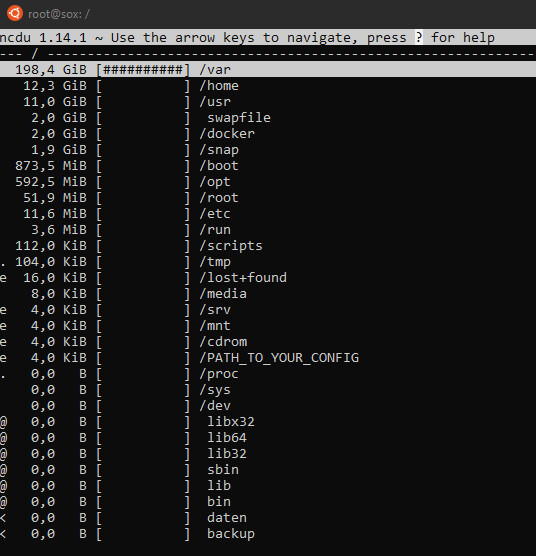Linux folder used space - Bash TreeSize
To find out which folder needs how much space, the command “du” can be used on Debian. For an even better overview there is the commandline tool ncdu, which can analyze all folders similar to TreeSize.
du
du -ah -d1 /var/www/vhostsThe parameter -d1 shows only first level folders
-mh
a... used space for all files and
h...Human Readable, i.e. in a readable format: K, M, ... for kilobytes, megabytes, ...
Memory hog
Journal
If the Linux Journal becomes very large, it can be limited as follows:
Only the most recent entries are then kept:
root@server:/var/log/journal# du -ah -d1
3.8G ./dbd2984f94c34d65b0839d60d6f48b1b
8.1M ./53955387d3174396b874db791b202516
3.8G .
In the following file the journal can be limited:
vi /etc/systemd/journald.confAs an example on 500M
SystemMaxUse=500M
SystemMaxFileSize=100M
/var/lib/mlocate

PRUNEPATHS customize:
sudo vi /etc/updatedb.conf

sudo updatedb
ncdu - NCurses Disk Usage
With ncdu an overview of the used space for all folders can be displayed very quickly:
sudo apt install ncduAfter Installation for example the Root-Partition can be scanned using the following command:
sudo ncdu / -xThe Parameter -x excludes other mounted Disks (Do not cross filesystem boundaries, i.e. only count files and directories on the same filesystem as the directory being scanned.)

 ({{pro_count}})
({{pro_count}})
{{percentage}} % positive
 ({{con_count}})
({{con_count}})